In This Article
Electricity is the cornerstone of modern civilization — most everything in our lives revolves around it. It's the lifeblood that keeps the world turning, and without it our civilization would hit a serious bump in the road. We need it to illuminate the night, refrigerate our food, pump our gas, run lifesaving medical devices and, needless to say, it's essential to our vast communications networks.
In the United States, blackouts like the 2003 New York event, and the more recent power loss event in 2011 on the West Coast, cost us millions of dollars in lost revenue. While none of these incidents were believed to be intentionally caused, it does show how reliant we are on our nation's power grid. It's this very grid that can be an enticing target for terrorists or rogue states to target. One potential attack on our electricity could come in the form of an electromagnetic pulse (EMP), which can be created by a nuclear blast.
An EMP is a wave of electromagnetic radiation that is generated by natural phenomenon like lightning and static electricity. It is also the byproduct of manmade events such nuclear detonation. In our scenario, we face the repercussions of a high-altitude nuclear attack. While the physical damage from a nuclear explosion would be devastating at ground level, it's a high-altitude nuclear blast that would allow the resulting EMP to cause the most damage. EMP requires line of sight to be fully effective, so assuming the initial blast is strong enough, the higher it is implemented, the more surface area the EMP will affect.

EMP produces surges that damage or destroy modern electronic devices. According to the 2008 Critical National Infrastructure Commission (CNIC) study on the effects of an EMP, a nuclear explosion at an altitude of 100 kilometers (62.1 miles) would expose 4-million square kilometers or 1.5-million square miles of the Earth's surface. That covers roughly half the surface area of the contiguous United States with just a single detonation.
One way to protect valuable or essential electronics is with what is called a Faraday cage or box. They can be as simple as a cardboard box wrapped tightly in tinfoil, or as complex as specially built “screen rooms” used in major laboratories and universities.
The concept of a Faraday box is fairly basic. It is a container with a conductive layer or skin that reflects and absorbs incoming electromagnetic fields. In doing so it creates opposing fields that help dissipate the incoming fields and protect your electronics inside.
Containers do not have to be airtight, but the holes do need to be smaller than the wavelengths they are trying to defend against. All this is based on English scientist Michael Faraday's research from the 1800s. Yes, we kid you not, technology from the 1800s can help protect your equipment from a nuclear blast.
The container itself needs to have some kind of nonconductive liner to prevent the items inside from touching the conductive skin. You can utilize rubber, foam, or any other nonconductive material. Some everyday items can be used as Faraday box on a limited basis. A microwave is itself a shielded box, or you could insulate an ammo can to make a quick and simple box.
Remember, once an EMP event happens, it is too late to shield your electronics after the fact. That means that you would have to leave your Faraday box sealed until after the event passes. As much as you might wish to put all your expensive electronics in there to protect them, it just would not be practical since you'd never be able to use them. So for our box, we selected items that were relatively inexpensive, but would really be convenient to have in an emergency. Size is also a consideration. We wanted the box to be small enough to fit in a closet and not take up too much space.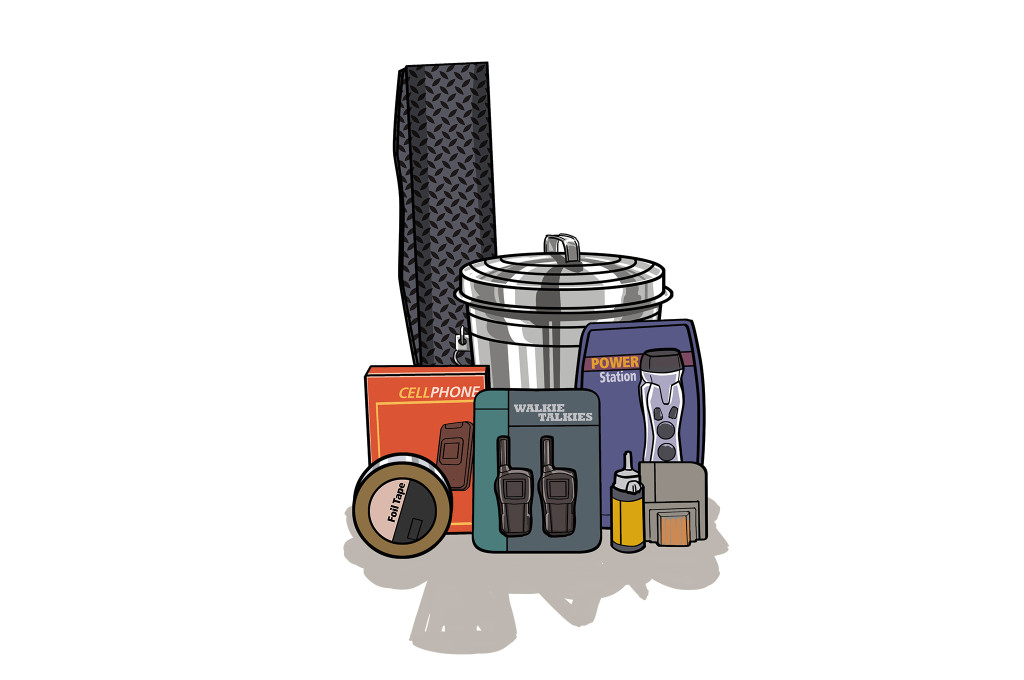
Our Faraday box contains:
This will provide for basic news and information and also allow us to communicate with family in case we need to travel.
Since the type of energy waves one might encounter can vary, we opted for a sealed box solution. Our sample Faraday box is constructed out of a 6-gallon galvanized steel can. We utilized a rubber anti-fatigue mat that you might put in front of your workbench to stand on. The mat is used to line the inside of the can and provide insulation for the items stored within.
Make sure you continually test fit the liner. Use as few pieces as possible to protect your contents from leaks in the seams. With the items to be protected placed safely inside, we then sealed the can with HVAC foil tape. We were able to find all the necessary supplies at the local hardware store. The mat was the most expensive item, but the total cost to complete the Faraday box was about $80.
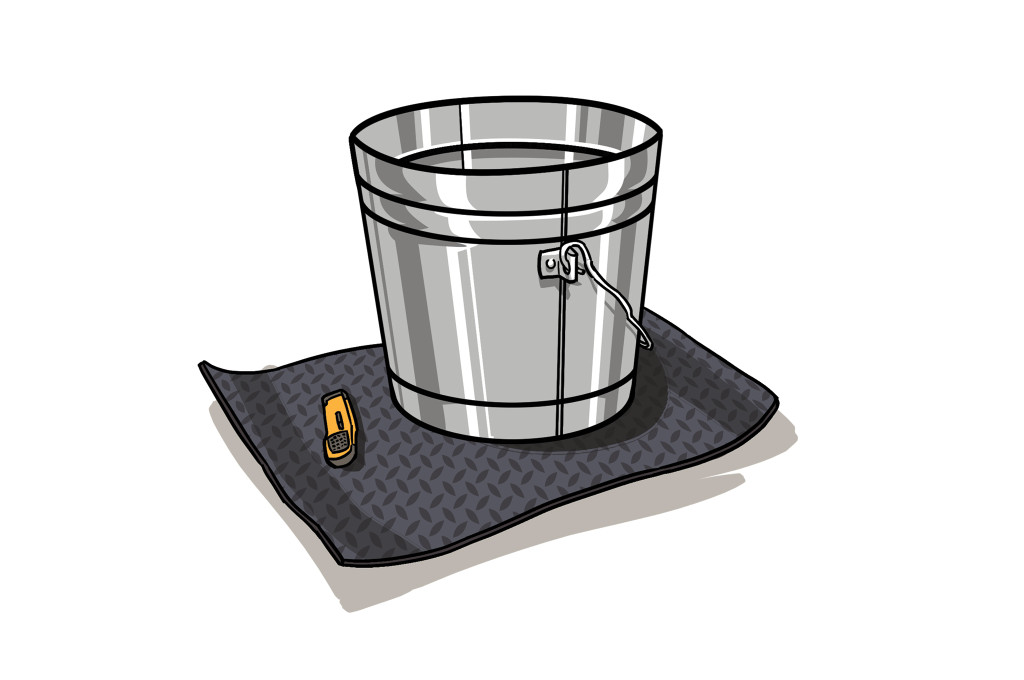
1 Your items need to be protected all around. We used the bottom of the pail as a template for the nonconductive material.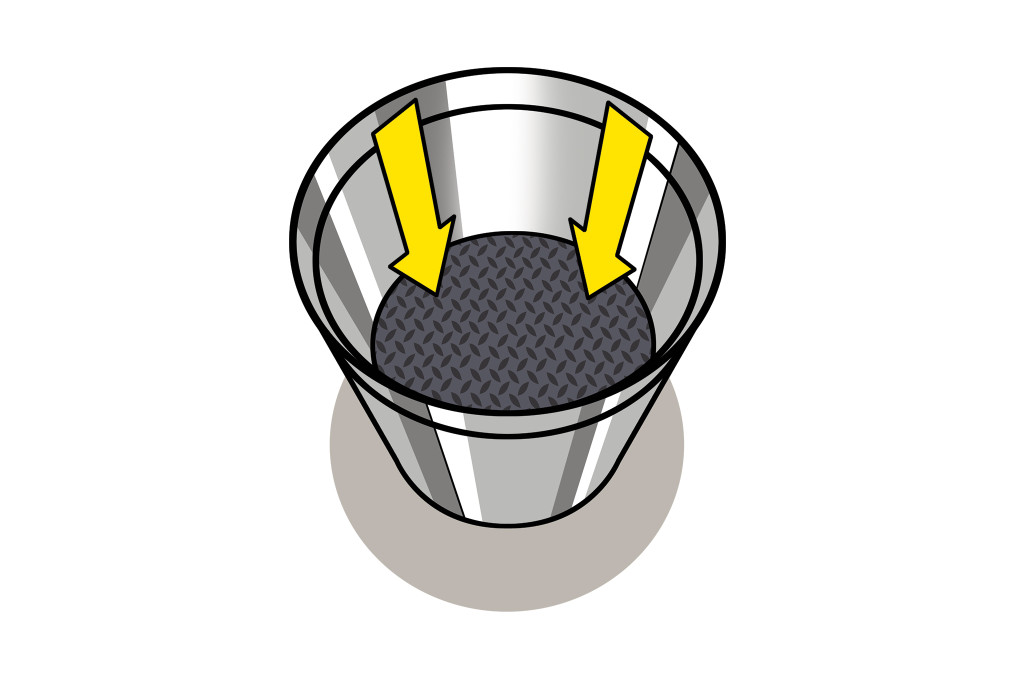
2 We started by lining the bottom with the material. We left it a little long so it would curl up on the outside edges. We secured it to the bottom using an epoxy-style glue.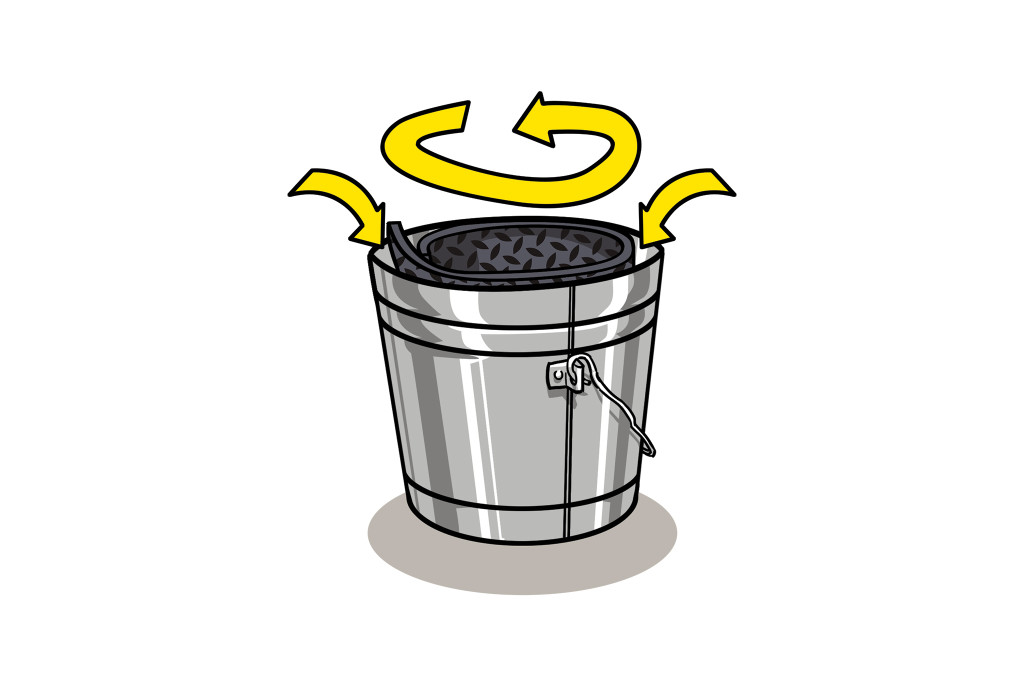
3 Next up is to line the sides with material. The angle of the side proved to be a little tricky. We rolled the material up into a cylinder making sure to leave enough room for the equipment to be stored. We then glued the pieces to the bottom.
4 Using the lid as a template we lined the top of the lid with the floor mat.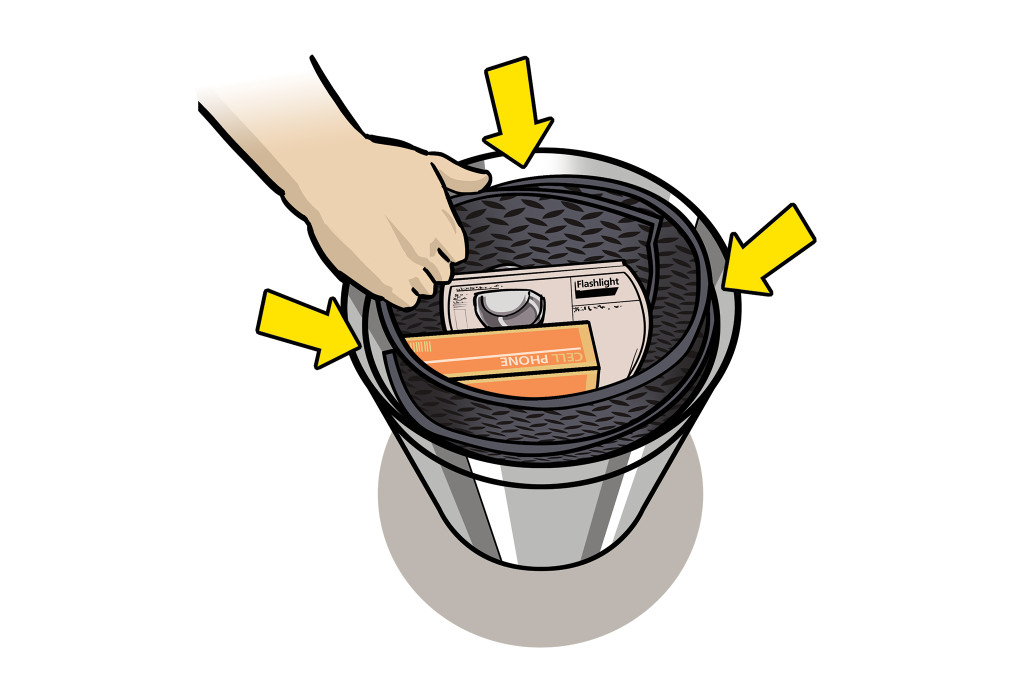
5 Once we placed all the items in the container, we used the extra floor mat material to build support around the inner cylinder.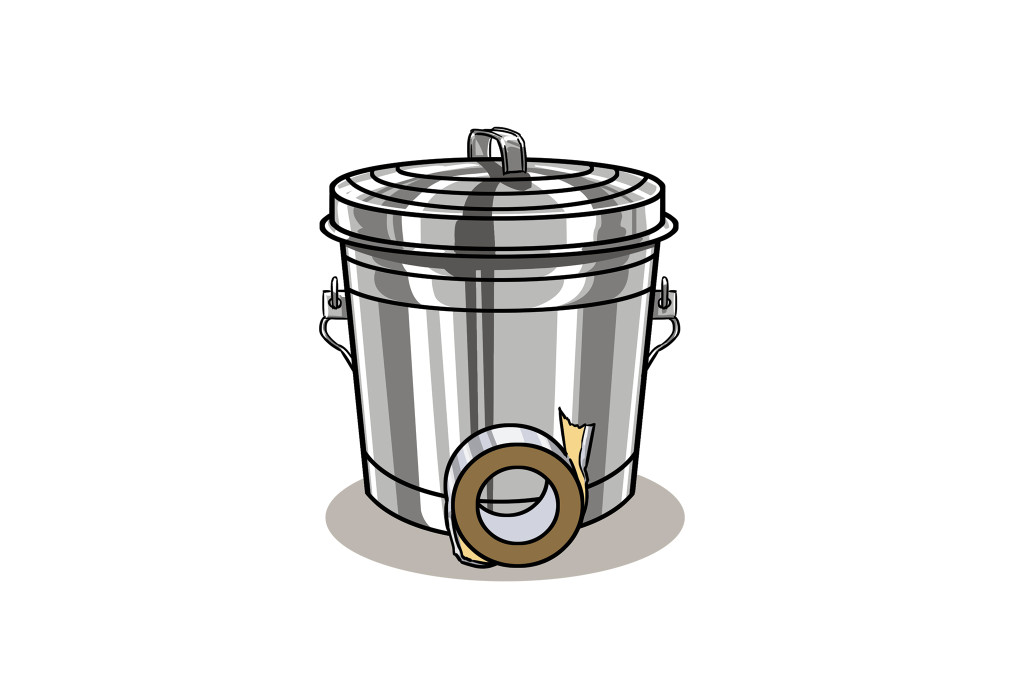
6 For added protection, we used aluminum-heating duct tape. This will help seal the gap between the lid and the body of the container.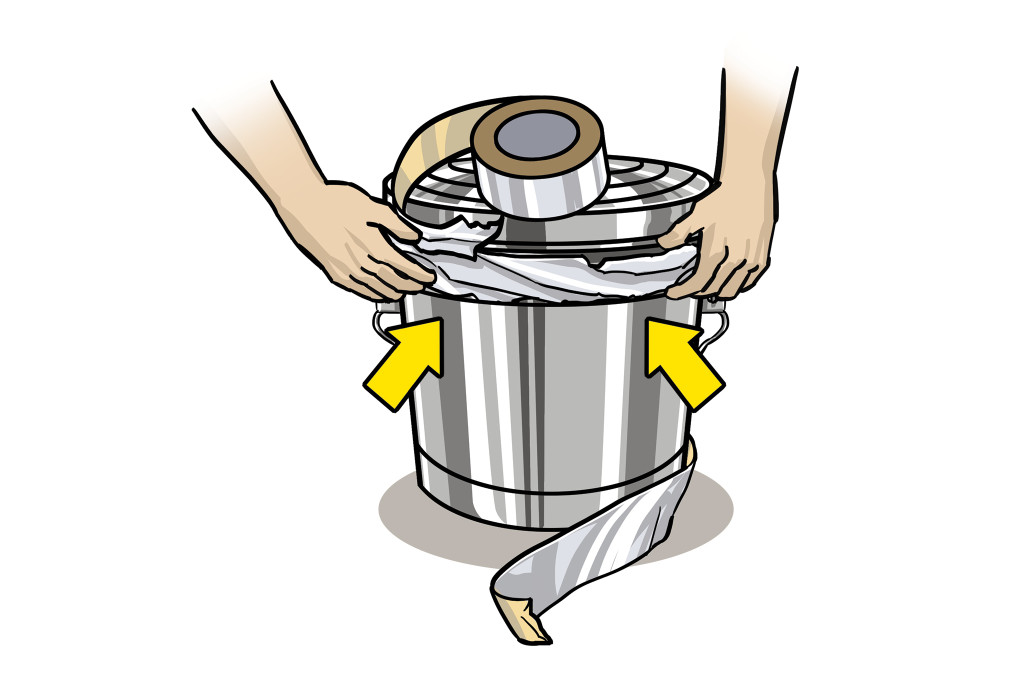
7 The aluminum tape was surprisingly thin. We had to carefully wrap it a couple of times to get a good seal.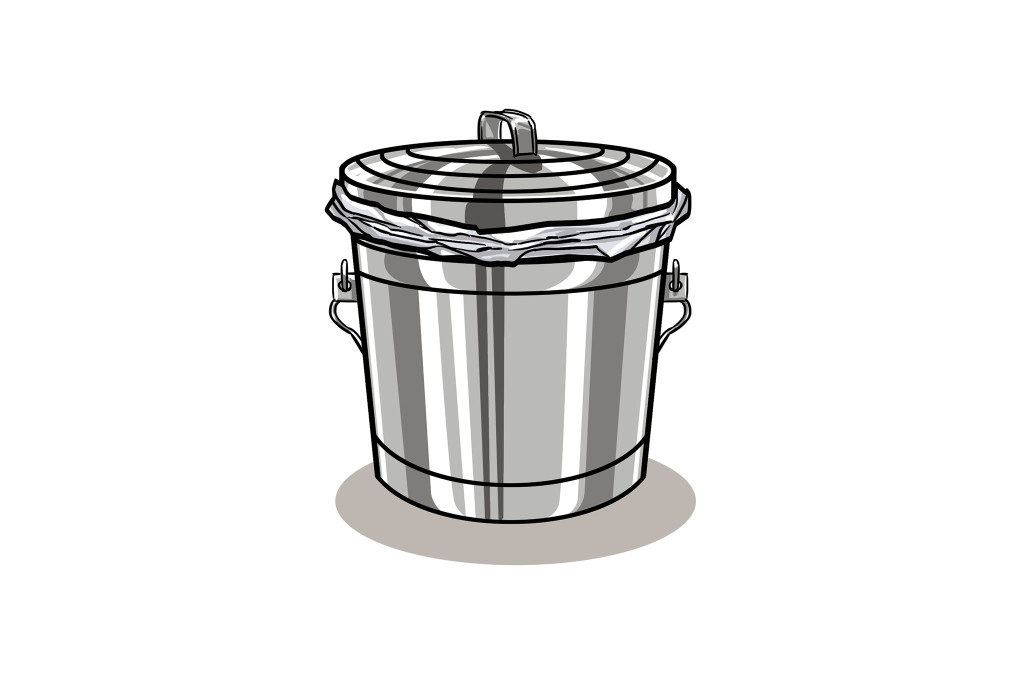
8 The finished product. We were pretty pleased with how it turned out. It's even small enough that your girlfriend or wife shouldn't mind losing a little closet space.
Despite the general belief, an EMP event wouldn't necessarily wipe out all electronics in the affected area. A lot of modern electronics have been so well shielded to prevent interference from other devices that they are fairly well protected. The CNIC study analyzed the effects of an EMP attack on most areas of daily life. The report suggests that about only 10 percent of automobiles would stop working, but traffic would be disrupted due to signals going out and traffic jams due to the other disabled cars. The electrical infrastructure would remain mostly intact with damage primarily to transformers. The commission concluded that the impact to the electrical infrastructure would be severe, but not catastrophic.
One thing you might notice that is missing from this article is any reference to solar flares. Throughout our reading of research papers for this article the general consensus was that most modern electronics are shielded well enough to protect against solar flares. Most experts recommend that the best defense against a solar flare is to unplug your electronics or use a quality surge protector. Solar flares are also fairly predictable as they take time to travel between the sun and Earth, allowing a person time to secure their electronic devices.
Will we ever see an EMP event? Who knows, but aren't you reading this magazine because you're the type of person who'd rather be prepared? Better safe than sorry. So, head on over to your local hardware store and build yourself a Faraday box. Marvel at how cool it is to be using technology from almost 200 years ago!
Sources
If you would like to learn more about how an EMP event could affect your way of life, we encourage you to read the Critical National Infrastructures Report found here > http://tinyurl.com/5v8vt2
 STAY SAFE: Download a Free copy of the OFFGRID Outbreak Issue
STAY SAFE: Download a Free copy of the OFFGRID Outbreak Issue
No Comments